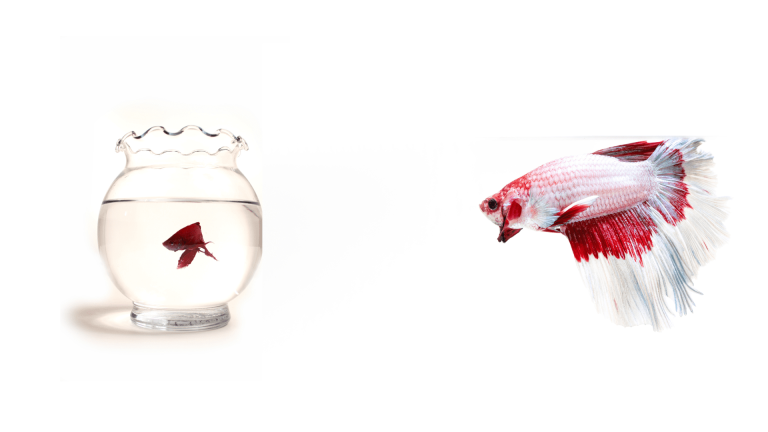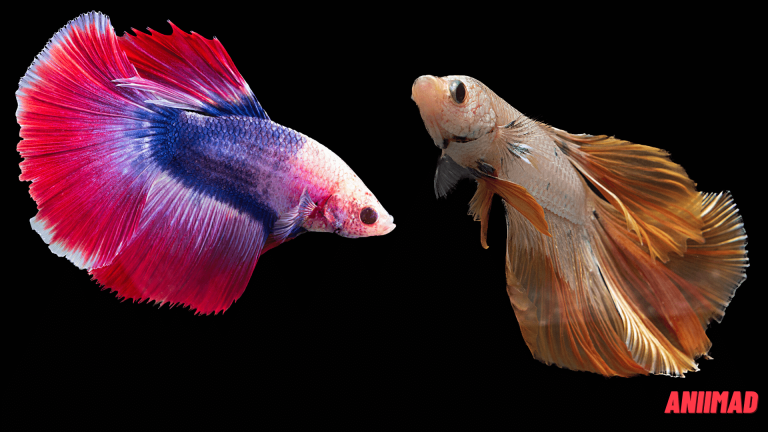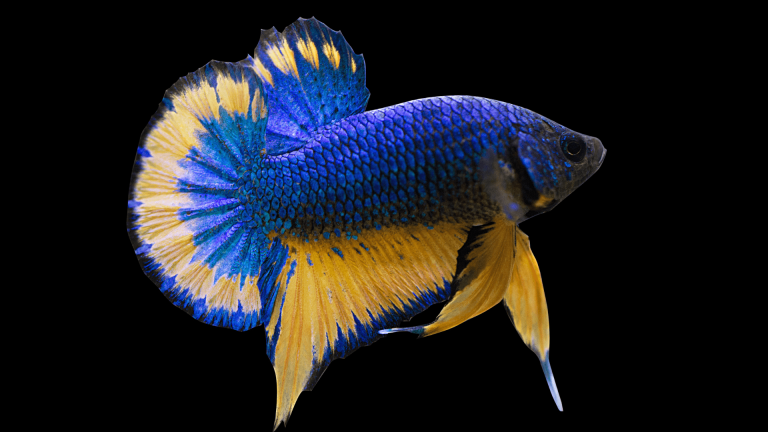How to Clean a Betta Fish Tank: A Step-by-Step Guide for a Healthy Habitat
Contents
- 1 Does Betta Fish Like Clean or Dirty Water?
- 2 How Often Do You Clean a Betta Fish Tank?
- 3 Should You Remove Your Fish From the Tank While Cleaning?
- 4 How to Safely Remove Your Fish
- 5 Should You Clean the Filter at the Same Time as the Aquarium?
- 6 Tools You Will Need to Clean the Betta Fish Tank?
- 7 How to Clean a Betta Fish Tank Step-By-Step
- 7.1 Step 1: Gather Supplies
- 7.2 Step 2: Turn off Electrical Devices
- 7.3 Step 3: Remove Your Betta
- 7.4 Step 4: Partial Water Change
- 7.5 Step 5: Clean the Tank Interior
- 7.6 Step 6: Clean Decorations
- 7.7 Step 7: Clean the Gravel
- 7.8 Step 8: Refill the Tank
- 7.9 Step 9: Reacclimate Your Betta
- 7.10 Step 10: Turn on Electrical Devices
- 7.11 Step 11: Test Water Parameters
- 8 Here are Some Frequently Asked Questions About How to Clean a Betta Fish Tank
- 8.1 How often should I clean my betta fish tank?
- 8.2 Do I need to remove my betta fish from the tank while cleaning?
- 8.3 Can I use soap or cleaning agents to clean the tank and decorations?
- 8.4 How do I clean the gravel or substrate in the tank?
- 8.5 Is it necessary to clean the filter during tank cleaning?
- 8.6 What water conditioner should I use, and how much should I add?
- 8.7 How do I return my betta fish to the tank after cleaning?
- 8.8 Can I clean the tank decorations with bleach?
- 8.9 Should I clean the tank plants?
- 8.10 How do I prevent cloudiness after cleaning?
- 9 Conclusion About How to Clean a Betta Fish Tank
Learn how to clean a Betta fish tank effectively to ensure the well-being of your beloved finned friend. This detailed guide covers step-by-step instructions, expert tips, and essential do’s and don’ts for maintaining a clean and healthy habitat for your Betta fish.
While having a Betta fish as a pet can be gratifying, you also have to take care of keeping your aquatic companion in a clean and healthy habitat. In this guide, we’ll walk you through the step-by-step process of cleaning your Betta fish tank, keeping it sparkling clean and your Betta happy.
Does Betta Fish Like Clean or Dirty Water?

Betta fish, like all fish, thrive in clean water. Contrary to a common misconception that they prefer dirty or stagnant water due to their native habitats in shallow rice paddies or slow-moving waters, bettas need clean and well-maintained aquariums to stay healthy and happy.
In their natural environment, bettas may live in shallow waters, which are not stagnant or polluted. The rice paddies and other slow-moving waters where bettas find still have natural water circulation and filtration provided by plants, bacteria, and other biological processes.
In captivity, betta fish are typically kept in aquariums with a filter and proper water circulation to mimic their natural habitat. Clean water helps to maintain appropriate water parameters, such as ammonia, nitrite, and nitrate levels, which are crucial for a betta’s health. High ammonia and nitrite levels can be toxic to bettas, causing stress and potentially leading to illness. Additionally, clean water ensures that your Betta has access to enough oxygen and reduces the risk of infections and diseases caused by poor water quality.
Regular water changes, sound filtration, and tank cleanliness are all necessary to provide your Betta with a healthy habitat. A well-maintained tank will help your Betta thrive, display vibrant colors, and exhibit natural behaviors.
How Often Do You Clean a Betta Fish Tank?

Cleaning frequency for a betta fish tank depends on the size of the tank, the filtration system in place, and the number of decorations or live plants present. A regular cleaning schedule is crucial to maintain a healthy and clean environment for your Betta. Here are some guidelines to help you determine how often to clean your betta fish tank.
Partial Water Changes
Perform partial water changes every week or every two weeks. A 25-30% water change is usually sufficient to remove accumulated waste and maintain water quality. If your tank is more prominent and well-filtered, you might get away with doing water changes every two weeks.
Gravel Cleaning
During each water change, use a siphon hose to gently vacuum the gravel or substrate to remove debris, uneaten food, and fish waste. It maintains the water pure and aids in preventing the accumulation of dangerous contaminants.
Filter Maintenance
Regularly check and clean the filter according to the manufacturer’s recommendations. Some filters may require cleaning every 2-4 weeks, while others have replaceable filter media that need changing at specific intervals.
Algae Cleaning
Remove any algae buildup on the tank walls, decorations, and plants as soon as you notice. It can be done during water changes using a soft sponge or algae scraper.
Monthly Deep Cleaning
Once a month, consider doing a more thorough cleaning, which involves removing decorations and rinsing them, cleaning the tank walls and gravel, and checking the equipment for any debris or dirt buildup.
Monitor Water Parameters
In addition to regular cleaning, monitor the water parameters (pH, ammonia, nitrite, and nitrate levels) weekly, especially if you’re new to fishkeeping or notice any changes in your Betta’s behavior. Keeping track of water parameters helps detect issues early and take corrective actions.
Remember that over-cleaning or changing too much water at once can disrupt the tank’s biological balance. A stable and established aquarium benefits from beneficial bacteria that help break down waste. Strive for a balance between cleanliness and maintaining a stable environment.
Ultimately, observing your Betta and the tank’s condition will guide you in determining the best cleaning schedule for your specific setup. Adjust the frequency based on your Betta’s behavior and the water quality. When in doubt, it’s always better to err on the side of more frequent, more minor water changes to keep your betta fish healthy and happy.
Should You Remove Your Fish From the Tank While Cleaning?
It recommends removing your fish from the tank while performing significant cleaning or maintenance tasks. There are several reasons why it is essential to do so:
Safety
Cleaning the tank while your fish is still inside can be stressful for them and potentially dangerous. You may accidentally harm or stress the fish while cleaning the tank or moving decorations.
Use of Cleaning Agents
Some cleaning agents, even if they are meant for aquarium use, can still be harmful to fish if they come into direct contact with them. It’s best to avoid using any cleaning agents inside the tank and opt for natural cleaning methods like using a soft sponge or algae scraper.
Disturbing the Tank Environment
Cleaning can temporarily disturb the tank environment and introduce fluctuations in water parameters, temperature, and oxygen levels. It’s better to allow your fish to be in a separate container with water from the tank during the cleaning process.
Easy and Effective Cleaning
Removing your fish from the tank allows you to clean it thoroughly and efficiently without worrying about their well-being. When empty, you can clean the tank walls, decorations, and substrate more effectively.
How to Safely Remove Your Fish

When removing your fish from the tank for cleaning, follow these steps to ensure their safety:
- Prepare a clean container or bucket with water from the tank. Ensure the water is at the same temperature as the tank to avoid temperature shock.
- Catch your fish gently using a clean fishnet. Be patient and avoid stressing the fish.
- Transfer your fish to the prepared container with tank water.
- Keep your fish in the container throughout the cleaning process.
- After cleaning, acclimate your fish to the tank by adding small amounts of water to the container for 15-20 minutes. It helps them adjust to any slight changes in water parameters.
Removing your fish during tank cleaning creates a safer and less stressful environment for them, contributing to their overall well-being and longevity.
Should You Clean the Filter at the Same Time as the Aquarium?
Yes, it is generally a good practice to clean the filter at the same time you clean the aquarium. The filter is a crucial component of the aquarium’s ecosystem, removing debris, fish waste, and other organic matter from the water. Regular cleaning ensures the filter continues to function efficiently and helps maintain a clean and healthy environment for your fish.
Here are some tips for cleaning the filter
Turn off the filter
Before cleaning the filter, turn it off and unplug it from the power source. It prevents any accidents and gives you safe access to the filter media.
Remove and Rinse the Filter Media
Take out the filter media, such as sponge pads, cartridges, or bio-media, from the filter. Rinse the media in a bucket of aquarium water (never use tap water, as it may contain chlorine or chloramine) to remove excess debris and buildup.
Do Not Overclean the Filter Media
While removing debris and waste from the filter media is essential, avoid cleaning it too thoroughly. Beneficial bacteria populate the filter medium and aid in the aquarium’s breakdown of hazardous ammonia and nitrite. Cleaning the filter media too harshly can disrupt these healthy bacteria colonies. A gentle rinse is usually sufficient.
Replace Filter Media (If Needed)
Some filter media may need replacing periodically, depending on your filter type. Check the manufacturer’s recommendations for your specific filter to know when to replace the media.
Clean Filter Housing
While the filter media is out, take a moment to clean the filter housing or impeller chamber, if applicable, using a soft brush or toothbrush. It helps prevent clogs and ensures the filter’s smooth operation.
Reassemble and Restart the Filter
Once you’ve cleaned the filter media and housing, reassemble the filter and place it back into the aquarium. Plug it in and let it run, ensuring it’s functioning correctly.
Cleaning the filter during the aquarium cleaning process ensures that the filtration system works optimally, maintaining water quality and reducing the buildup of harmful substances. Remember that over-cleaning the filter media can disrupt the beneficial bacteria balance, so gentle maintenance is usually enough.
Also, remember that some filters, like sponge filters, benefit from only light rinsing in tank water to remove debris, as their primary function is to provide a surface for beneficial bacteria to grow. To guarantee optimal maintenance, always follow the detailed instructions from the filter manufacturer.
Tools You Will Need to Clean the Betta Fish Tank?

Cleaning a betta fish tank effectively requires some essential tools to make the process easier and more efficient. Here’s a list of tools you’ll need:
Fishnet
A fishnet with fine mesh is necessary to safely catch and transfer your betta fish to a separate container while you clean the tank.
Siphon Hose/Gravel Vacuum
A siphon hose or gravel vacuum removes debris, uneaten food, and fish waste from the substrate (gravel) during water changes. It helps maintain water quality and cleanliness.
Bucket or Container
A clean bucket or container is needed to hold the water you siphon out during water changes and to acclimate your betta fish.
Soft Sponge or Algae Scraper
To clean the tank walls and decorations, you’ll need a soft sponge or algae scraper. Avoid using any cleaning agents or harsh materials that could harm your fish.
Water Conditioner
Before adding it to the tank, tap water must treat with a water conditioner. It removes harmful substances like chlorine and chloramine, making the water safe for your Betta.
Water Testing Kit
A water testing kit monitors important water parameters such as pH, ammonia, nitrite, and nitrate levels. Regular testing ensures a healthy environment for your Betta.
Aquarium Thermometer
Using an aquarium thermometer, you can monitor the water’s temperature and ensure it stays consistent within the bettas’ preferred range.
Clean Cloth or Towel
Keep a clean cloth or towel handy for wiping and drying the outside of the tank and any equipment you may need to clean.
Replacement Filter Media (if applicable)
If your filter uses replaceable media, have some on hand for regular maintenance or replacement.
Gravel Rake (optional)
A gravel rake can help maintain the substrate without disturbing the plants’ roots if you have a heavily planted aquarium with fine substrate.
Having these tools ready will make cleaning more efficient and help maintain a clean and healthy environment for your betta fish. Regular maintenance is crucial to your Betta’s well-being and ensures that you can enjoy a thriving and beautiful aquatic companion.
How to Clean a Betta Fish Tank Step-By-Step

Cleaning your betta fish aquarium is essential to maintaining a healthy environment for your pet. Here’s a step-by-step guide to help you clean your betta fish tank effectively:
Step 1: Gather Supplies
Collect all the necessary supplies before you start the cleaning process. You will need a fishnet, a siphon hose or gravel vacuum, a clean bucket or container, a soft sponge or algae scraper, a water conditioner, a water testing kit, and a clean cloth or towel.
Step 2: Turn off Electrical Devices
Before starting, turn off and unplug any electrical devices connected to the aquarium, such as filters, heaters, and lights.
Step 3: Remove Your Betta
Using a fishnet, gently catch your Betta and transfer it to a separate container filled with some of the tank water. It keeps your Betta safe during the cleaning process.
Step 4: Partial Water Change
Remove approximately 25-30% of the water from the tank using the siphon hose or gravel vacuum. Avoid vacuuming the gravel at this stage; you’ll clean it later.
Step 5: Clean the Tank Interior
With the water partially drained, use a soft sponge or algae scraper to clean the tank walls and remove algae buildup. Avoid using soap or cleaning agents that could be harmful to your Betta.
Step 6: Clean Decorations
If your tank has decorations like rocks or artificial plants, remove them and rinse them thoroughly with warm water. Avoid using any cleaning agents.
Step 7: Clean the Gravel
Next, use the siphon hose or gravel vacuum to clean the gravel or substrate. Gently vacuum the stone to remove debris, uneaten food, and fish waste.
Step 8: Refill the Tank
Refill the tank with fresh, dechlorinated water. Use a water conditioner to treat the tap water and remove harmful chemicals like chlorine and chloramine. Follow the instructions on the water conditioner product for the correct dosage.
Step 9: Reacclimate Your Betta
Before returning your Betta to the tank, ensure that the water temperature in the container matches the tank’s water temperature. Gradually acclimate your Betta to the new water by adding a small tank to the container for 15-20 minutes.
Step 10: Turn on Electrical Devices
Once your Betta has successfully reintroduced to the tank, turn on and plug in the electrical devices such as filters, heaters, and lights.
Step 11: Test Water Parameters
Check the tank’s water parameters, including pH, ammonia, nitrite, and nitrate levels, using a water testing kit. Monitoring these levels is essential for a healthy environment.
Here are Some Frequently Asked Questions About How to Clean a Betta Fish Tank

How often should I clean my betta fish tank?
Cleaning frequency depends on factors like tank size, filtration, and number of decorations. In general, perform partial water changes every week or every two weeks, along with regular filter and substrate cleaning.
Do I need to remove my betta fish from the tank while cleaning?
It recommends removing your Betta from the tank during significant cleanings to ensure its safety and reduce stress. Place your Betta in a separate container with tank water while you clean.
Can I use soap or cleaning agents to clean the tank and decorations?
Avoid using soap or any cleaning agents inside the tank. Even trace amounts can be harmful to your Betta. Stick to using warm water and a soft sponge or algae scraper for cleaning.
How do I clean the gravel or substrate in the tank?
Use a siphon hose or gravel vacuum to vacuum the gravel during water changes gently. It removes debris and waste while maintaining water quality.
Is it necessary to clean the filter during tank cleaning?
Yes, clean the filter during the tank cleaning process. Rinse the filter media in the tank water to eliminate debris, but don’t overdo it because that can kill the good bacteria.
What water conditioner should I use, and how much should I add?
Use a water conditioner designed for aquariums to remove harmful chemicals like chlorine. Follow the product instructions for the correct dosage based on your tank’s volume.
How do I return my betta fish to the tank after cleaning?
Gradually acclimate your Betta by adding small amounts of tank water to the container it’s in over 15-20 minutes. It helps it adjust to any changes in water parameters.
Can I clean the tank decorations with bleach?
No, using bleach or other household cleaning agents can be toxic to your Betta. Stick to rinsing decorations with warm water only.
Should I clean the tank plants?
Artificial plants can rinse with warm water. If you have live plants, be gentle around their roots during cleaning to avoid damage.
How do I prevent cloudiness after cleaning?
Cloudiness after cleaning except due to disturbed debris and bacteria. It usually clears within a day or two. Good filtration and maintaining water parameters help prevent persistent cloudiness.
Consistent cleaning and maintenance are crucial for keeping your betta fish healthy and happy. Always prioritize your Betta’s safety and avoid using harmful substances that could harm its delicate aquatic environment.
Conclusion About How to Clean a Betta Fish Tank
By following this step-by-step guide on how to clean a Betta fish tank, you can provide your beloved fish with a clean and healthy environment. Regular tank maintenance ensures your Betta’s well-being and allows you to enjoy the beauty of these magnificent creatures for years to come.






